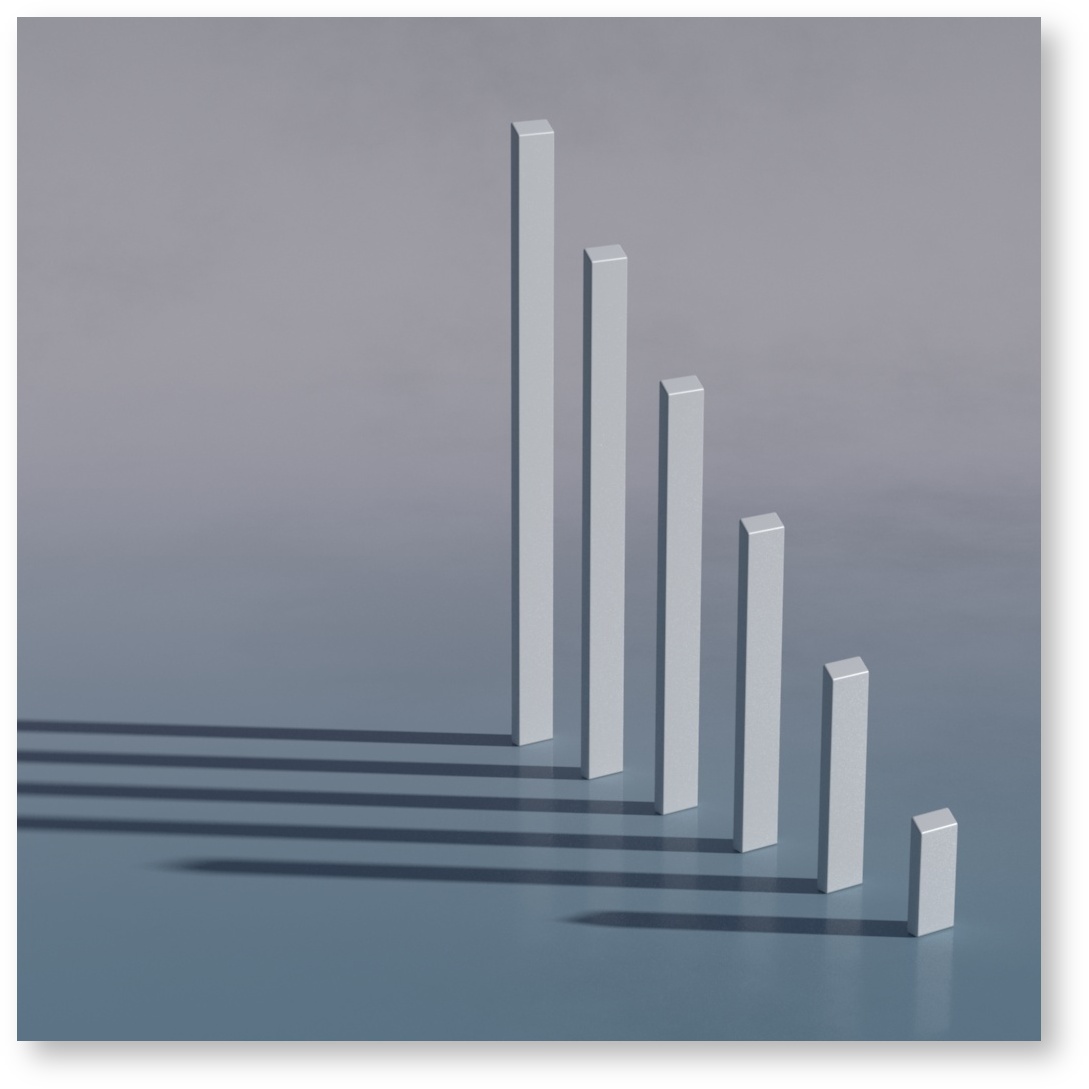A distant light is a infinitely far light source. It is generally used to replicate the light effect from the sun
Creating a Distant Light
To create a distant light, right-click in the GafferThree's Object table and select Add → Distant Light, or press the W key. Distant lights are shown as a group of arrows pointing in the light's direction in the Viewer.
A distant light in the Gaffer Object Table and in the Viewer.
Positioning a Distant Light
The distant light's transform can be edited in the Object tab. While positioning and scaling an infinitely far object makes little sense, adjusting the translation and scale can make manipulating a distant light in the Viewer easier. During rendering, only the rotation has an effect.
Adjusting a Distant Light Shape Visibility
A distant light can be made Visible to Camera in the Object tab. It will be represented as a disk in the image background.
Controlling the Light from a Distant Light
The Object tab allows specifying the Angular Diameter of the distant light (as is explained in more details below). The Material tab serves to control several light parameters. The effect of these are explained and illustrated in the next sections.
The Object tab of a distant light.
The Material tab of a distant light.
Color, Intensity and Exposure can be adjusted using their respective gadget in the GafferThree's object table. Exposure and Intensity can also be adjusted through 3Delight Display's Mixer for lights that have their own Mutli-Light image output.
Distant Light Controls
Normalize Intensity by Area
Turning this parameter on will divide the total intensity of the distant light by its area, allowing adjustments to the angular diameter or the scale of the light without affecting the intensity.
Angular Diameter
A directional light emulates a point light source that is placed at infinity. However, it is often handy to be able to specify objects that are extremely far but are not well simulated by a single point (e.g. the sun). Since it would be impractical to specify the footprint of a far away object using absolute values of distance and size, we use instead the angular diameter, in degrees, spanned by an object in the sky.
0.0
0.5 (e.g. the Sun)
2.0
8.0
Note that modifying the angular diameter will change the light intensity when Normalize by Area is turned off.
Light Intensity and Color Controls
Color
Defines the light color.
Intensity
Species the light intensity.
Exposure
This is an additional control over the standard light intensity. Exposure is in many cases a preferred control due to its likeness to photography. Final light intensity is thus computed by:
I = intensity * pow(2, exposure)
Decay Rate
Specify the rate at which the light intensity decreases in function of the distance to the light source. The available values are:
No Decay | Light intensity remains constant with respect to distance. |
|---|---|
Linear | Light intensity decreases linearly with distance. |
Quadratic | Light intensity decreases proportionally to the square of the distance. This is the physically correct behaviour. |
Cubic | Light intensity decreases proportionally to the cube of the distance. |
Fine Tuning the Light Contribution to the Shading Components
It is sometimes useful to have a fine and direct control on how the light intensity affects various shading components. The following controls allows for that:
Diffuse Contribution
Specifies a multiplier for the light contribution to diffuse shading.
Specular Contribution
Specifies a multiplier for the light contribution to specular shading.
Hair Contribution
Specifies a multiplier for the light contribution to hair shading.
Volume Contribution
Specifies a multiplier for the light contribution to volumetric effects in atmosphere and OpenVDB volumes.







